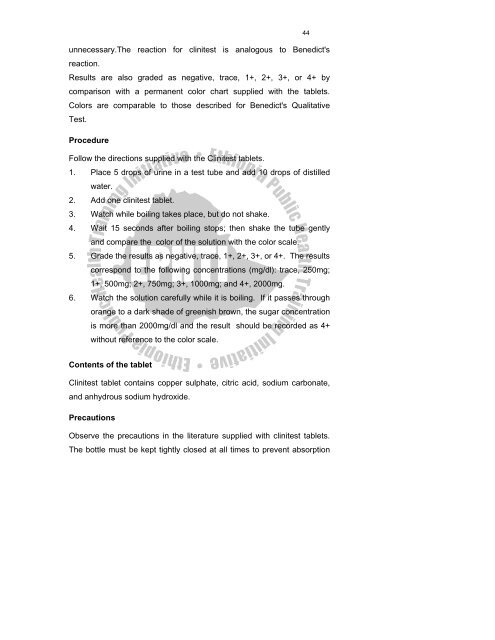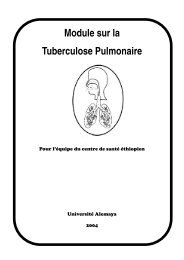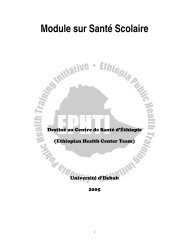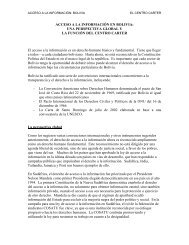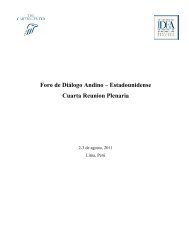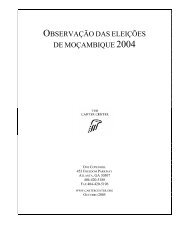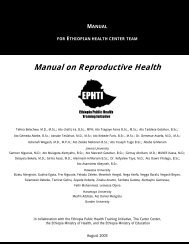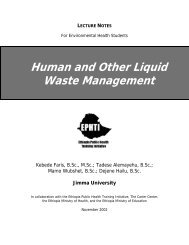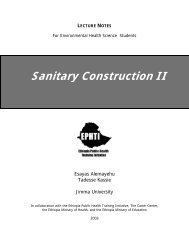Urinalysis - The Carter Center
Urinalysis - The Carter Center
Urinalysis - The Carter Center
Create successful ePaper yourself
Turn your PDF publications into a flip-book with our unique Google optimized e-Paper software.
unnecessary.<strong>The</strong> reaction for clinitest is analogous to Benedict's<br />
reaction.<br />
Results are also graded as negative, trace, 1+, 2+, 3+, or 4+ by<br />
comparison with a permanent color chart supplied with the tablets.<br />
Colors are comparable to those described for Benedict's Qualitative<br />
Test.<br />
Procedure<br />
Follow the directions supplied with the Clinitest tablets.<br />
1. Place 5 drops of urine in a test tube and add 10 drops of distilled<br />
water.<br />
2. Add one clinitest tablet.<br />
3. Watch while boiling takes place, but do not shake.<br />
4. Wait 15 seconds after boiling stops; then shake the tube gently<br />
and compare the color of the solution with the color scale.<br />
5. Grade the results as negative, trace, 1+, 2+, 3+, or 4+. <strong>The</strong> results<br />
correspond to the following concentrations (mg/dl): trace, 250mg;<br />
1+, 500mg; 2+, 750mg; 3+, 1000mg; and 4+, 2000mg.<br />
6. Watch the solution carefully while it is boiling. If it passes through<br />
orange to a dark shade of greenish brown, the sugar concentration<br />
is more than 2000mg/dl and the result should be recorded as 4+<br />
without reference to the color scale.<br />
44<br />
Contents of the tablet<br />
Clinitest tablet contains copper sulphate, citric acid, sodium carbonate,<br />
and anhydrous sodium hydroxide.<br />
Precautions<br />
Observe the precautions in the literature supplied with clinitest tablets.<br />
<strong>The</strong> bottle must be kept tightly closed at all times to prevent absorption


